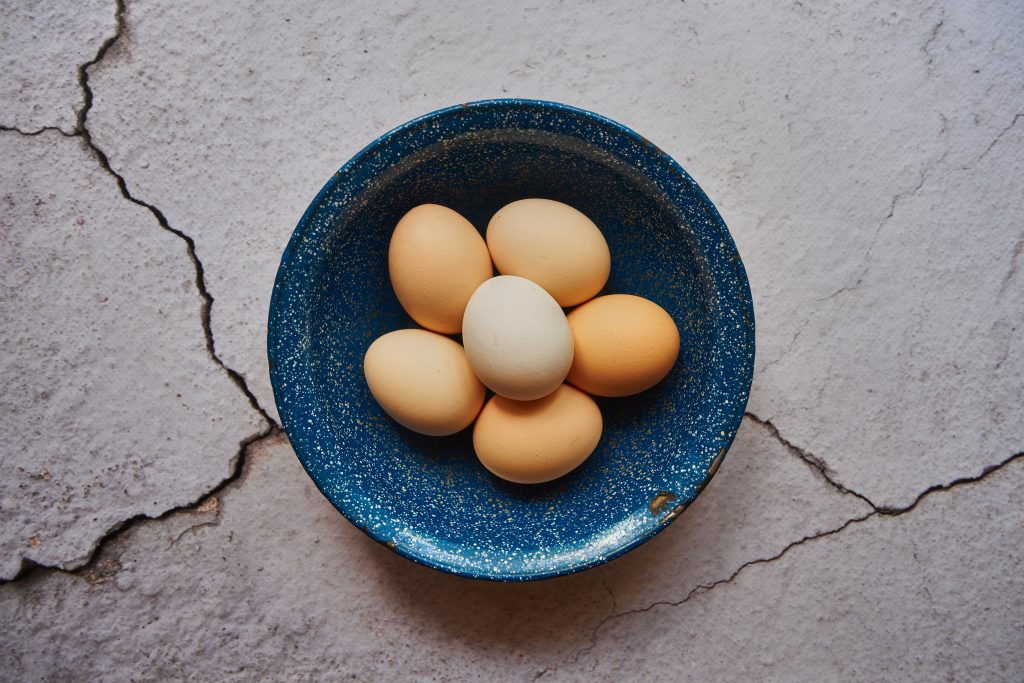Easter is a time of joy, family gatherings, and cultivating tradition. However, in the heat of cooking traditional dishes, baking cakes, cleaning, and decorating, it is easy to forget about sensible water management. And yet it is water – so inconspicuous on a daily basis – that plays a key role in almost every holiday activity. In the days leading up to the holidays, it is worth taking a look at simple ways that each of us can implement to reduce its consumption. Here are some of our suggestions on how to celebrate Easter more consciously – with care for water, the environment, and future generations.
Cook Economically!
During Easter cooking, we use huge amounts of water, for everything from washing vegetables to boiling eggs and preparing traditional dishes. However, there are a few ways to help us protect ourselves from wasting water in the kitchen. First of all, we need to remember that water can be reused. The water in which we cooked vegetables can be used as a wonderful natural broth, as a base for soups or sauces. It is worth considering introducing this solution in our kitchen.
As you know, vegetables and fruits purchased at the market or in supermarkets should be washed before adding them to the Easter salad. However, instead of pouring out liters of running water, it is worth considering filling a bowl in which you can then rinse the products. This way, you will not use more water than necessary. What is worth knowing – such water can be used again later, to water the plants!
And what would a holiday table be without eggs? We all know that there is no Easter without them. Every year we hard-boil them to put in a basket and then share them at the holiday table. That is why it is worth remembering that when cooking them, you only need to use enough water to completely cover the eggs. You do not have to fill the entire pot. You can also try the steam cooking method, which has recently become very popular – and for good reason! Steaming allows you to significantly reduce the amount of water used, because unlike traditional cooking, it does not require as much water to completely immerse the products. All you need is a small amount of water at the bottom of the pot, which turns into steam when heated and gently envelops the vegetables or eggs, cooking them evenly.
Clean Effectively!
After the holiday cooking and feasting, it’s time for a less popular part – washing up. Unfortunately, we often use more water than we would like. How to deal with this? If you have a dishwasher – great! It’s one of the most water-efficient appliances in the kitchen, just remember to start it only when it’s fully loaded. And what if you wash it by hand? Use a water-filled bowl or basin instead of washing under running water. It’s also worth reducing the use of detergents to a minimum. The less foam is produced, the less water we’ll need to rinse it off.
In addition, we recommend using aerators, which are small rings mounted at the end of the tap spout. If our tap does not have one, nothing is lost! The attachment can be purchased separately. The advantage of an aerator is that it exerts negative pressure on the water flowing out of the tap, which enriches it with air bubbles. Thanks to this, we have the illusion of a large stream, but it is definitely smaller (up to 50%!). The aerator saves water, and therefore money. When we do not waste so much water, much less unused resources flow into the sewage system.
Decorate Your Home in the Spirit of Eco!
Easter decorations do not have to contribute to excessive water consumption. When creating Easter eggs, instead of reaching for chemical dyes in sachets, which often have to be rinsed intensively or mixed with a large amount of water, it is worth using natural dyes. You can use onion peels, beetroot, red cabbage or turmeric. What’s more, the water after their preparation can be used for further use, e.g. for watering plants (if it does not contain salt). It is worth finding alternative ways to maintain the tradition of colorful Easter eggs. Additionally, by dyeing eggs with children or friends, we teach that tradition and caring for the environment, including water, can go hand in hand.
Spring is coming with Easter – the world becomes colorful and joyful. Flowers and colorful decorations are also increasingly present in our homes. It is worth considering buying live plants in a pot instead of cut flowers or sowing your own plants. Easter decoration in the form of potted daffodils, cress or herbs will not only last longer, but also require way less water.
In addition to plants and Easter eggs, we decorate our homes in many different ways in March and April. It is worth investing in decorations that can serve us for years to come as a new tradition. Many decorations are reusable. So let’s use those we bought in previous years or make them ourselves from materials we have at home. Decorations made by ourselves, preferably from natural materials, not only allow us to reduce purchases, but also reduce the demand for production, and therefore water consumption in the earlier stages of their production. Remember that every product we buy has its own “water footprint” – from material, through transport, to packaging.
Wet Monday in Moderation
Śmigus-dyngus is one of the most recognizable Polish Easter traditions – full of laughter, water, and good fun. The tradition of pouring water on each other, although joyful, is associated with large water consumption, often without reflection on its value and impact on the environment.
In times of climate change and drought, it is worth celebrating Wet Monday responsibly:
Instead of pouring out buckets of water, choose bottles with a hole in the top, sprayers or small cups – the fun doesn’t have to be less successful! And if you do use a larger amount of water – do it in the garden! Dousing yourself with water in the garden or in the yard won’t cause such great losses – the water will water the plants. You can also plan to water the garden on the second day of Easter – it will be a great way to save money and combine fun with practical action. Talk to your children about why water is so valuable and how to save it – it’s a great time to learn through play.
An Opportunity to Implement Better Solutions
Amid the hustle and bustle of preparations, it is worth finding time to reflect on our impact on the environment. Easter is a time of joy and tradition. When we observe plants coming to life, we should remember that nature is not only beautiful but also important. This is a great time to introduce new, good habits – in addition to family traditions – that will serve not only us but also the entire planet. In our daily rush, it is easy to forget that water is a non-renewable resource – especially valuable at a time when droughts are becoming more and more intense and are becoming our daily reality. However, holiday preparations give us many opportunities to save water: from cooking and washing up, through cleaning, to eco-friendly decorations.
Tradition can be combined with modernity! You just have to approach the subject consciously. Let’s cook wisely, wash products and dishes sparingly, reach for natural dyes, potted plants, and reusable decorations. Every gesture matters, especially when it is multiplied by millions of households.
Let’s make sure that the joy of the holidays goes hand in hand with care for the environment, because only thanks to wise water management will future generations be able to enjoy a beautiful, green spring and… a delicious Easter Babka.

 PL
PL

